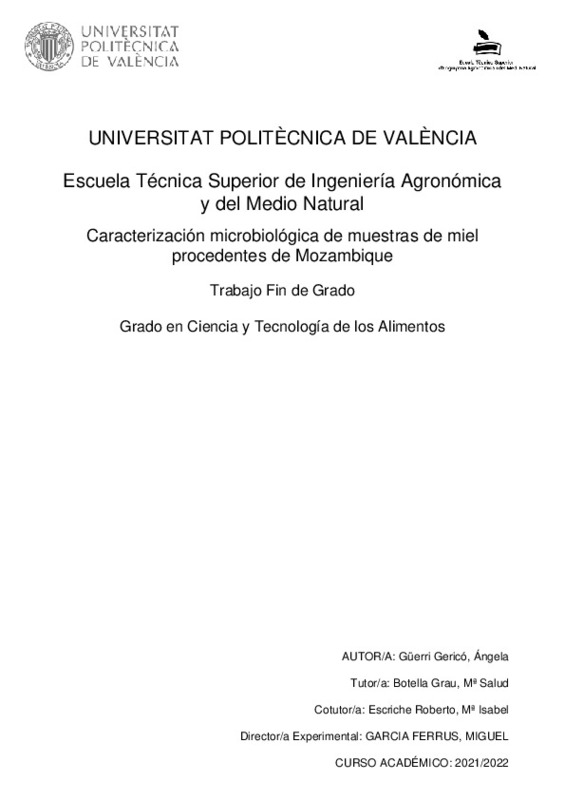|
Resumen:
|
[ES] La calidad de la miel se define por sus características físicas, químicas, sensoriales y microbiológicas y, al tratarse de un alimento natural, presenta una microbiota característica propia que puede modificarse por ...[+]
[ES] La calidad de la miel se define por sus características físicas, químicas, sensoriales y microbiológicas y, al tratarse de un alimento natural, presenta una microbiota característica propia que puede modificarse por las condiciones higiénicas de manipulación durante los procesos de extracción, envasado o conservación.
El criterio microbiológico de aceptabilidad de la miel en España se ha modificado con el tiempo. En la actualidad solamente se recoge el control de Listeria monocytogenes, aunque se reconoce como uno de los alimentos que se han vinculado con el botulismo infantil. Es por ello que se debería actualizar qué parámetros microbiológicos tendrían que controlarse y así también se cumpliría con el objetivo 3 de Salud y Bienestar para garantizar una vida sana (ODS-OMS).
En este trabajo se han analizado 28 muestras de miel procedentes de distintas regiones de Mozambique (Manica, Sofala, Nampula y Zambezia). Los parámetros valorados han sido la disponibilidad de agua (aw), humedad relativa (HR) y se han cuantificado las poblaciones de aerobios mesófilos, mohos y levaduras, aerobios esporulados, anaerobios sulfito-reductores, así como la presencia de Salmonella spp. y Listeria monocytogenes.
Según nuestros resultados, recomendaríamos revisar los parámetros a controlar en la miel como ausencia de aerobios sulfito-reductores y limitar la disponibilidad de agua (aw) y las poblaciones de aerobios mesófilos, aerobios esporulados y mohos y levaduras.
Los resultados del ANOVA mostraron que las mieles de las cuatro regiones difieren significativamente respecto a aw, HR, aerobios mesófilos y aerobios esporulados, pero no existen diferencias en cuanto a la población de mohos y levaduras.
[-]
[EN] The quality of honey is defined by its physical, chemical, sensory, and microbiological characteristics and, being a natural food, it has its own characteristic microbiota that can be modified by the hygienic conditions ...[+]
[EN] The quality of honey is defined by its physical, chemical, sensory, and microbiological characteristics and, being a natural food, it has its own characteristic microbiota that can be modified by the hygienic conditions of handling during the extraction, packaging or preservation processes.
The microbiological criteria for the acceptability of honey in Spain have been modified over time. At present, only the control of Listeria monocytogenes is included, although it is recognized as one of the foods that have been linked to infant botulism. That is why it should be updated which microbiological parameters would have to be controlled and thus would also meet goal 3 of Health and Well-being to ensure a healthy life (SDG-WHO).
In this work, 28 honey samples from different regions of Mozambique (Manica, Sofala, Nampula and Zambezia) were analyzed. The parameters assessed were water availability (aw), relative humidity (HR) and the populations of mesophilic aerobes, molds and yeasts, sporulated aerobes, sulfite-reducing anaerobes, as well as the presence of Salmonella spp. and Listeria monocytogenes.
According to our results, we would recommend revising the parameters to be controlled in honey as the absence of sulfite-reducing aerobes and limiting water availability (aw) and the populations of mesophilic aerobes, sporulated aerobes and molds and yeasts.
ANOVA results showed that honeys from the four regions differed significantly with respect to aw, HR, mesophilic aerobes and sporulated aerobes, but there were no differences with respect to the population of molds and yeasts.
[-]
|







